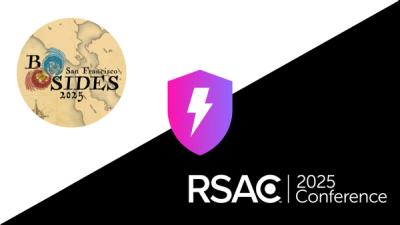
Security Fundamentals
Obfuscation 101: Unmasking the Tricks Behind Malicious Code
Attackers use obfuscation to hide malware in open source packages. Learn how to spot these techniques across npm, PyPI, Maven, and more.
@formsort/web-embed-api
Advanced tools
Embed Formsort flows within other webpages, with communication between the embed and the parent page.
If you're using React, see @formsort/react-embed which is a handy wrapper around this.
First, install
yarn add @formsort/web-embed-api
npm install @formsort/web-embed-api --save
Then, initialize the embed and load a flow.
Initializes a Formsort iframe as a child of the rootEl provided.
const embed = FormsortWebEmbed(document.body);
The optional config object has the following interface:
interface IFormsortWebEmbedConfig {
useHistoryAPI?: boolean; // Default: false
autoHeight?: boolean; // Default: false
style?: {
width?: CSSStyleDeclaration['width'];
height?: CSSStyleDeclaration['height'];
};
authentication?: {
idToken?: string; // ID Token for authenticated flows
};
}
config propertiesuseHistoryAPI: When redirecting, should we use the HTML5 History API (namely, window.pushState), or just change the URL in its entirety?
Helpful if you have a single-page app and want to change the container's URL without reloading the entire page. Note that you'll have to listen to the popstate event on the embedding window to detect this navigation.
autoHeight: Should the embedding <iframe> resize so that it matches the content of the currently loaded flow?
style: CSS properties to be applied to the iframe container.
authentication.idToken: When the Flow requires an ID token, this can be used to provide it.
loadFlow(clientLabel: string, flowLabel: string, variantLabel?: string, queryParams?: Array<[string, string]>) => voidStarts loading a Formsort variant, or a flow.
Note that variantLabel is optional: if it is not provided, a variant will be chosen at random from that flow.
setSize(width: number, height: number) => voidSet the CSS size of the embed.
You may also style the embed's iframe using CSS - it is the iframe child of the rootEl, so you'd use the selector #rootEl > iframe.
embed.addEventListener(eventName: key of IEventMap, fn: IEventMap[eventName]) => void
If the flow is embedded in a whitelisted domain, each event listener will be passed the user's answers.
The events include:
(answers?: { [key: string]: any } ) => voidSet a callback function to be called when the Formsort flow has loaded completely.
Note that this is more accurate than listening for the iframe's load event, as this is sent from within the Formsort application code and not merely when the DOM is loaded.
You can listen for this to do things like hide the frame container, or display a loading indicator, until everything is loaded to ensure a seamless initial experience.
const embed = FormsortWebEmbed(document.body);
embed.addEventListener('FlowLoaded', () => {
console.log('Flow has loaded!');
});
embed.loadFlow('formsort', 'onboarding', 'main');
(answers?: { [key: string]: any }) => voidSet a callback to be called when the flow is complete, meaning the user has finished all of the steps available to them.
Useful for performing an action after the flow is complete, such as displaying a congratulations or starting a payment process.
(answers?: { [key: string]: any }) => voidSet a callback to be called when the user abandons the flow before finalizing it.
Note that this is only possible if your style set defines a close button.
(answers?: { [key: string]: any }) => voidSet a callback to be called when a new step is loaded.
This will happen once after the flow is loaded, if the user hasn't previously completed the flow. Subsequently, this event will happen following the completion of each step, except for the completion of the final step.
(answers?: { [key: string]: any }) => voidSet a callback to be called when a step is completed. This includes the completion of the final step, before the "FlowFinalized" event.
({ url: string, answers?: { [key: string]: any } }) => ({ cancel?: boolean }) | undefinedSet a callback to customize the way Formsort handles redirects. To cancel Formsort's handling of the redirect, return:
{
cancel: true;
}
If the callback does not return a value, Formsort will handle the redirect as usual.
This is helpful if you're embedding Formsort within a single-page app that has custom URL route handling.
() => voidSet a callback for unauthorized Formsort messages.
This callback is used when the Formsort Flow is authenticated but the ID token is missing or invalid.
By default, the web embed accesses the production formsort servers. If you would like to point to another flow server, set origin in the config to the correct base URL, for example:
FormsortWebEmbed(document.body, { origin: 'http://localhost:4040' });
FAQs
Embed Formsort flows within other webpages
The npm package @formsort/web-embed-api receives a total of 4,280 weekly downloads. As such, @formsort/web-embed-api popularity was classified as popular.
We found that @formsort/web-embed-api demonstrated a healthy version release cadence and project activity because the last version was released less than a year ago. It has 6 open source maintainers collaborating on the project.
Did you know?

Socket for GitHub automatically highlights issues in each pull request and monitors the health of all your open source dependencies. Discover the contents of your packages and block harmful activity before you install or update your dependencies.

Security Fundamentals
Attackers use obfuscation to hide malware in open source packages. Learn how to spot these techniques across npm, PyPI, Maven, and more.

Security News
Join Socket for exclusive networking events, rooftop gatherings, and one-on-one meetings during BSidesSF and RSA 2025 in San Francisco.

Security News
Biome's v2.0 beta introduces custom plugins, domain-specific linting, and type-aware rules while laying groundwork for HTML support and embedded language features in 2025.